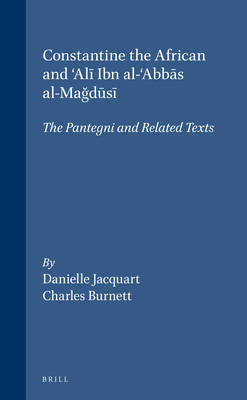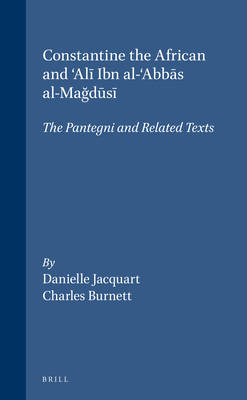
- Afhalen na 1 uur in een winkel met voorraad
- Gratis thuislevering in België vanaf € 30
- Ruim aanbod met 7 miljoen producten
- Afhalen na 1 uur in een winkel met voorraad
- Gratis thuislevering in België vanaf € 30
- Ruim aanbod met 7 miljoen producten
Zoeken
Constantine the African and 'Alī Ibn Al-'Abbās Al-Mağūsī
The Pantegni and Related Texts
Danielle Jacquart, Charles Burnett
€ 354,45
+ 708 punten
Omschrijving
When the tenth-century Kāmil as-sinā'a (or al-Kitāb al-malakī) of 'Alī ibn al-'Abbās al-Mağūsī was adapted for a Latin-reading audience by Constantine the African in the late eleventh century, the medieval West had, for the first time, the opportunity to use a text which covered the whole of medicine. But the 100-odd extant manuscripts suggest that Contantine's Pantegni was put together over a considerable period of time, and chapters from other Latin and newly-translated Arabic medical works were added to or substituted those of the Kāmil. This book is the first to be devoted to Constantine the African: it sheds light on the School of Salerno and the formation of a medical corpus in the High Middle Ages.
Specificaties
Betrokkenen
- Auteur(s):
- Uitgeverij:
Inhoud
- Aantal bladzijden:
- 376
- Taal:
- Engels
- Reeks:
- Reeksnummer:
- nr. 10
Eigenschappen
- Productcode (EAN):
- 9789004100145
- Verschijningsdatum:
- 1/09/1994
- Uitvoering:
- Hardcover
- Formaat:
- Genaaid
- Afmetingen:
- 166 mm x 246 mm
- Gewicht:
- 793 g

Alleen bij Standaard Boekhandel
+ 708 punten op je klantenkaart van Standaard Boekhandel
Beoordelingen
We publiceren alleen reviews die voldoen aan de voorwaarden voor reviews. Bekijk onze voorwaarden voor reviews.











